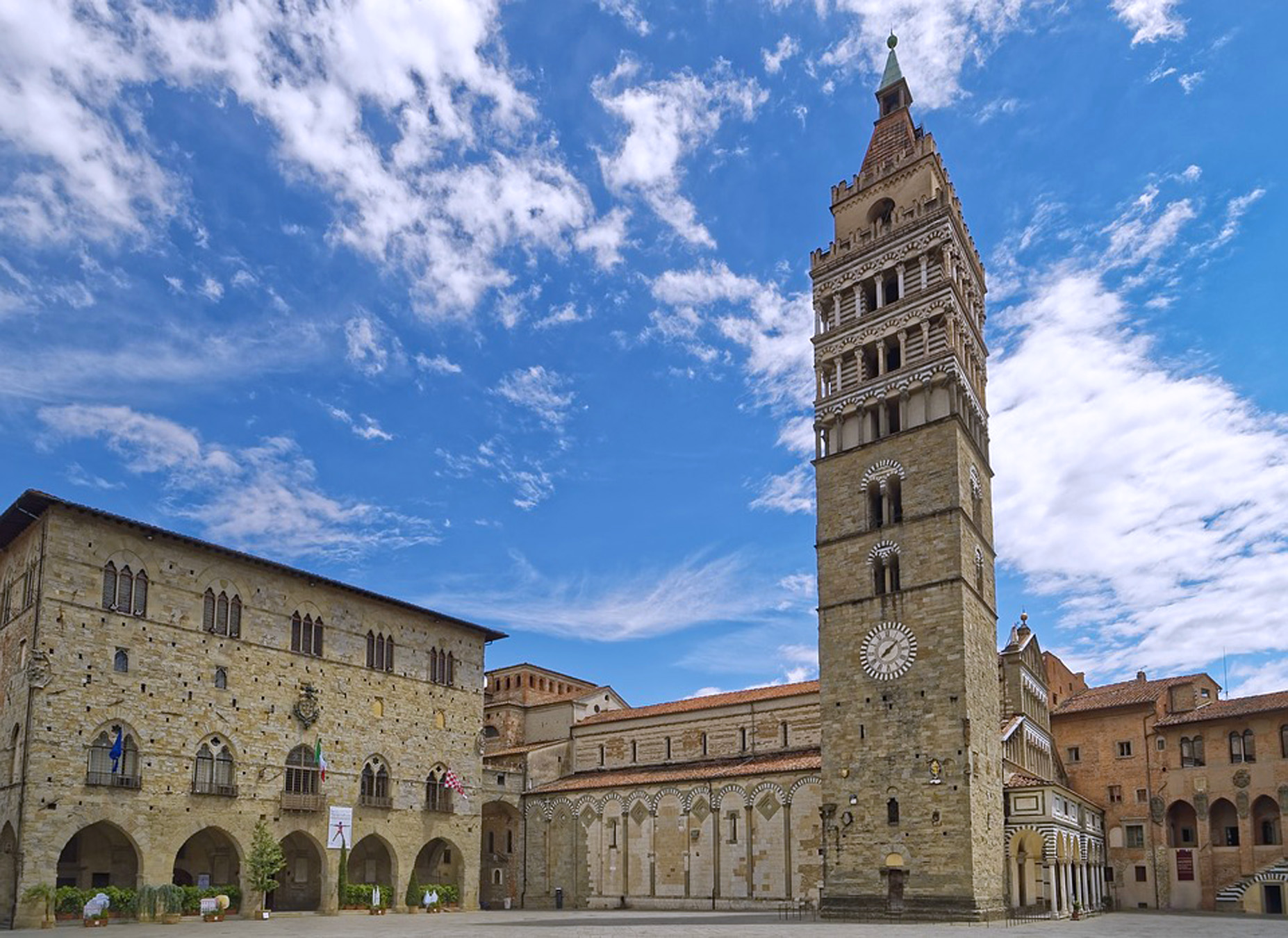The Province of Pistoia is tucked away between the far better known Tuscan areas of Florence and Lucca. It has existed as a province since 1927, when it was primarily agricultural in nature. Its capital, the city of Pistoia is roughly 25 miles away from both Lucca and Florence.
Pistoia was a center of Gallic, Ligurian and Etruscan settlements before becoming a Roman colony in the 6th century BC and was situated along the important Via Cassia. From the 5th century AD, the city was a bishopric and during the Lombardic period two centuries later, it was a royal city enjoying numerous privileges. Pistoia’s most splendid age began in 1177, when it proclaimed itself a free city, becoming an important political center aligned with Lucca. In 1254, the town was conquered by the Guelphs of Florence pitting the noble families of the two city states against one another. It took many years for an uneasy truce to be established. The town was officially annexed to Florence in 1530. One of the most famous families of the city was that of the Rospigliosi, owners of agricultural estates and wool merchants; the Rospigliosi provided a pope in 1667, with Giulio Rospigliosi, who briefly reigned as Clement IX (1667–69).
The town of Pistoia is believed to have lent its name to the pistol, which started to be manufactured in there during the 16th century. Today, it is also notable for the extensive plant nurseries spreading around it. Consequently, Pistoia is now famous for its flower markets, as is the nearby Pescia.
The marvelous landscape, plus the rich cultural and artistic heritage of the province reveals to travelers a natural beauty and artistic masterpieces. There is a rich variety of attractions on offer, including art tours, mountain excursions, spas and culinary holidays offered throughout the year. The mountains of Pistoia and the resorts of Abetone and Val di Luce are tourist destinations for skiers and the province also contains a combination of flat land, such as the area of the valley of the Ombrone, as well as mountainous terrain.
History weaves together with architecture, inviting vacationers on a journey into the past. The Medieval, Renaissance and Baroque ages reveal their grandeur in the palaces, public buildings and churches of Pistoia and Pescia. Excursions to nearby villages offer the discovery of castles and churches equally rich in historical and artistic detail. Anyone who appreciates nature will admire the extraordinary variety of the landscape and natural environments, from the rolling hills of the Colline Montalbano and the Svizzera Pesciatina, to the Padule wetlands in Fucecchio and the Querciola woods in Quarrata.
Gourmands can dedicate themselves to the rediscovery of genuine and authentic flavors, savoring local products and delicacies, whether in small restaurants or during the many local fairs and festivals. Those who prefer to find out more about cultural heritage, religion and folklore will come into close contact with the territory and its lengthy history by way of the many folkloristic traditions, events and celebrations.
Visiting Pistoia’s old town is like taking a journey back in time. In fact, Pistoia is a city with multiple amazing facets, thanks to its elegance and refined beauty. The evidence of the city’s Roman origins appears immediately upon entry, but visitors soon discover a series of churches, cloisters, palazzos and art treasures, not only dating back to the ancient past, but also to more recent centuries. Amidst the narrow, medieval streets with irregularly-shaped piazzas are prestigious palaces and small tower-houses; a surprising city emerges, bearing an innate and discrete charm, perfect for travelers who appreciate quality and slower paced tourism.
Pistoia was the Italian Capital of Culture in 2017 and enjoys an urban fabric that retraces the boundaries of the three sets of ancient city walls. Piazza del Duomo is still defined by the main buildings that characterized the city’s religious and political life over the centuries: the City Hall, Palazzo Pretorio, San Zeno Cathedral, Palazzo dei Vescovi, the Baptistery and the Bell Tower.
Not far from Pistoia, one reaches Pescia, a town that has much to offer for those whose passion extends to art and nature. The city’s origins are also medieval and belong to both banks of the river from which Pescia takes its name. On the right bank, the center’s foundation is its characteristic, elongated piazza, while on the left lies Pescia’s religious hub. Among the sights to see, beginning with Porta Fiorentina, one arrives at the Cathedral, re-built at the end of the 17th century. Just opposite is the Church of San Giuliano and next to the Cathedral is the Seminary Cloister and the nearby Church of the Oratory of Sant’Antonio Abate, conserving the wooden sculpture curiously called I Brutti Santi (the Ugly Saints) that dates back to the 13th century.
Nearby, the town of Collodi is renowned for giving Carlo Lorenzini, the author of The Adventures of Pinocchio, his nom de plume – Carlo Collodi. In the town you will find Pinocchio Park, a masterpiece of environmental art where it is possible to relive the tale of the famous wooden puppet through creations realized by famous artists from the 20th century, such as Giovanni Michelucci, Emilio Greco, Venturino Venturi and Pietro Porcinai. Another important sight to see in the hamlet is Villa Garzoni, with its monumental Italian garden and Butterfly House, a lush tropical garden with thousands of butterflies from all over the world.
The Padule di Fucecchio is a must-see for bird watchers. The marshland basin is located in the Valdinievole area, south of the Pistoia Apennines and lies between Montalbano and the Colline della Cerbaia. It is a stopover on bird migrations between the Tyrrhenian coast and the inland terrain. One can observe over 190 species of birds throughout the year.
The area of Montalbano is a land rich in history, art and traditions. It is also among the most beautiful areas in Tuscany, embracing a wide area between the Provinces of Florence, Pistoia and Prato. Montalbano’s hills are rich in chestnut woods, vineyards and olive groves and offer tourists a rural landscape that is still intact. Along ancient roads winds the Strada dell’olio e del vino del Montalbano Le colline di Leonardo. This fascinating olive oil and wine itinerary familiarizes travelers with the local products and villages beloved by the great master, Leonardo da Vinci.
The thermal baths in Montecatini Terme offer nine beautiful spas immersed in magnificent parks. The spas provide a complete regiment of treatment therapies and services by medical doctors. The water, rich in precious minerals, is unique in the world, providing numerous curing and healing properties. In the past, the baths hosted nobility and royalty through the centuries, while in more recent times, celebrities have provided the star attraction; proof that even outside of Tuscany’s most famous locations there is still much to see and enjoy. Such is the wonder of Italy and the Tuscan Province of Pistoia.





